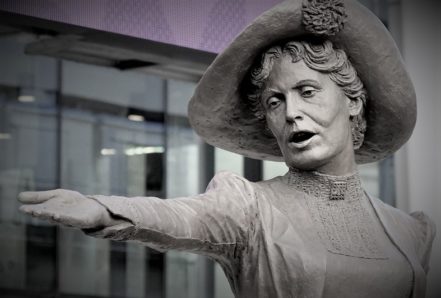
The Suffragettes
‘Suffrage’ is the right to vote. ‘Suffragists’ were those who were campaigning for women’s suffrage in the late 1800s. They lobbied MPs and had a lot of support, but the majority Liberals obstructed the matter. The Women’s Social & Political Union was formed in 1903 to force change by less peaceful means. They gained the name ‘Suffragettes‘, when a newspaper used it as a derogatory term in 1906.
Although their civil disruption and vandalism brought publicity, it probably hindered their cause, as the government could not appear to be influenced by subversive action. The Suffragettes held marches but also smashed windows, set fire to and bombed municipal buildings, theatres, shops, sports grounds, churches, railways, houses, hotels, telegraph poles and postboxes, and sent letter bombs. Many were jailed and went on hunger strike. One Suffragette died after walking out in front of a galloping horse at the Epsom Derby.
World War 1 was the turning point for the women’s suffrage movement, as it showed the capabilities of women in the absence of men. The first granting of the vote was given immediately after it, albeit only to women over 30 with property. Ten years later there was equality with men, when all women over 18 could vote.
(Image of statue of Emmeline Pankhurst, leader of the Suffragettes: David Dixon at geograph.org.uk / CC BY-SA 2.0)
